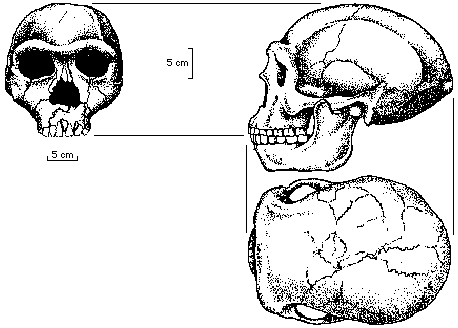

The scientific name for this species means upright man, and refers to its very early recognition as a progenitor of modern humans. Although H. erectus fossils are more abundant in other parts of the world, and more often closely associated with those areas, such as the Near East, China, Java, and Central Europe, they also occur at Olduvai. In fact one of the most important features of the deposits at Olduvai is that they document the transition, at least in stone tool traditions, between the tools used by A. africanus or H. habilis and those used by H. erectus.
The importance of H. erectus to later human history and evolution cannot be overstated. Living between 1.8 mya and 300,000 years ago, this was the first hominid to venture from its African homeland at about 500,000 years ago to colonize significant portions of the Old World, from Africa, through the Near East and China, into Java and what is now the Philippines. Although its increased size in general, and its increased brain size in particular, was probably a factor in this expansive venture into new lands, no doubt a very large component of the success of H. erectus was due to the development of new behavioral and technological responses to environmental conditions. Two of the most important of these responses was the controlled used of fire and the development of the stone tools technology known as the Acheulean Handaxe Tradition.
| |
|
|